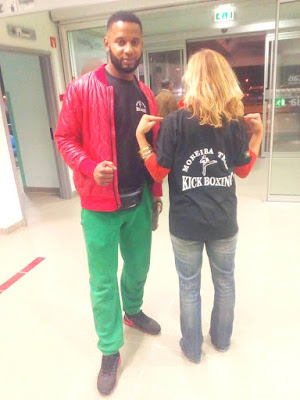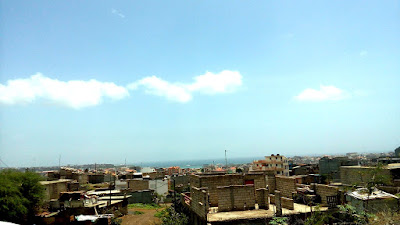Thailand 2017 – Mae Hong Son - Huay Pu Keng Village
For English version please scroll down
Estou na Tailândia porque vim apoiar a organização e participar no #cocreate17: Cross-Cultural Co-Creation Adventure (Thailand). Este evento decorre anualmente e combina a experiência de passar um fim-de-semana em Huay Pu Keng, seguido de uns dias de reflexão sobre esta mesma experiência, em Pai.
Estou na Tailândia porque vim apoiar a organização e participar no #cocreate17: Cross-Cultural Co-Creation Adventure (Thailand). Este evento decorre anualmente e combina a experiência de passar um fim-de-semana em Huay Pu Keng, seguido de uns dias de reflexão sobre esta mesma experiência, em Pai.
Huay Pu Keng é uma
pequena aldeia, situada em Mae Hong Son,
no norte da Tailândia, povoada por Karenni
principalmente pelos subgrupos étnicos Kayan
(pescoço longo) e Kayaw (grandes-orelhas).
Estes subgrupos são refugiados originários da antiga Birmânia, actualmente
República da União de Myanmar, que fugiram aos conflitos militares e se
instalaram no Norte da Tailândia, perto da fronteira.
O Governo Tailandês acolheu alguns destes refugiados em 1988/1989 e
permitiu a constituição de algumas aldeias. No entanto estas pessoas não têm
autorização a desenvolver outra actividade que não seja ligada ao turismo. O
acesso a cuidados de saúde e ensino é limitado.
A situação torna-se tanto mais grave porque legalmente os seus direitos são
muito residuais, bem como a sua mobilidade. Estão, portanto, à margem da
sociedade. Hoje, em teoria, estas pessoas poderiam regressar a Myanmar. No
entanto as condições actuais que este país oferece não permitem a sua
reintegração condigna, não lhes sendo garantido terra ou qualquer meio de
subsistência.
Ao longo destes anos, estas comunidades têm vivido do que a natureza lhes
dá e, complementarmente, têm-se sujeitado a um turismo considerado por muitos
como de “zoológico humano”. Tal classificação tem levado a uma redução
considerável do número de visitantes e, como tal, dificultado a sua
subsistência.
O Cross Cultural Co-Creation Club o que fez foi estabelecer contacto com
esta aldeia e, ao longo de um ano acompanhar os aldeãos na construção de
alternativas à situação actual. Dos encontros efectuados, e tendo em
consideração que a única actividade económica que lhes é permitida tem de estar
associada ao turismo, foi considerado pela população que seria importante
receber mais visitantes mas que estas visitas fossem mais humanas e se
constituíssem como momentos de intercâmbio de experiências e conhecimentos, enriquecedoras
tanto para a aldeia como para os que a visitam. Foram discutidas formas de
operacionalização destas ideias.
Assim ficou assente que, no primeiro fim-de-semana de cada mês, quando se
visita esta aldeia (com uma situação geográfica lindíssima, a que só se pode
aceder de barco) passaria a ser possível não só conhecer e ficar nas casas destes
aldeãos, como também frequentar workshops de joalheria, de construção de copos
e de badalos em bambu, de tecelagem, bonecas em madeira e trekking.
Para mim, mais importante ainda, estas visitas contemplam espaços de
interacção e co-criação com os visitantes e assim descobrir que apesar das
evidentes diferenças culturais (rituais, comida, tradições) e contextos (de não
terem praticamente acesso à electricidade ou internet e com condições de saúde
e de saneamento muito precárias), os habitantes são pessoas maravilhosas, com
uma forte ligação à natureza (animais e plantas) e um enorme sentido de
comunidade.
Porque vivemos momentos tão bonitos, de partilha, respeito e preocupação
com o outro, o grupo de visitantes (vindos de países tão diferentes como EUA,
Argentina, Chile, Brasil, Espanha, Portugal, Holanda e Tailândia) ganhou também
ele uma grande coesão e cumplicidade
E aqui ganha novamente corpo uma das frases mais inspiradoras repetidas por
toda a Ásia: “Same, same but different”.
English Version
English Version
I'm in Thailand because I came to support the organization and participate
in #cocreate17: a Cross-Cultural Co-Creation Adventure (Thailand). This event
is to take place annually, combining the experience of spending a weekend in a
village where cross-cultural co-creation is being practiced, followed by a few
days of reflection on co-creation in Pai. This year we visited Huay Pu Keng
village.
Huay Pu Keng is a small village, located in Mae Hong Son District in
northern Thailand, populated by Karenni mainly by the ethnic Kayan (long neck)
and Kayaw (big-ears) subgroups. These subgroups are refugees from former Burma,
now Republic of the Union of Myanmar, who fled the military conflicts and
settled in northern Thailand, near the border.
The Thai Government hosted some of these refugees in 1988/1989 and allowed
the establishment of some villages. However, these people are not authorized to
develop another activity that is not linked to tourism. Access to health care
and education is limited.
The situation becomes even more serious because legally their rights are
very residual as well as their mobility. They are, therefore, on the margins of
society.
Today, in theory, these people could return to Myanmar. However, the
current conditions that this country offers do not allow them to be properly
reintegrated. Even if they went back, there is no guarantee they would find and
or any means of subsistence.
Over these years, these communities have lived on what nature gives them
and, in addition, they have been subjected to a tourism considered by many as a
"human zoo". Such classification has led to a considerable reduction
in the number of visitors and, as such, made it difficult for them to subsist.
The Cross Cultural Co-Creation Club made contact with this village and, for
a year, accompanied the villagers in the development of alternatives to the
current situation. From the meetings held, and considering that the only
economic activity allowed to them has to be associated with tourism, it was
considered by the population that it would be important to receive more
visitors.
However that visits should be more humanized and to constitute moments of
exchange of experiences and knowledge, enriching both the village and those who
visit it. Ways of operationalizing these ideas have been discussed and tried
out.
Thus it was established that on the first weekend of each month, when
visiting this village (with a beautiful geographical situation, which can only
be accessed by boat) it is now possible not only to know and stay in the houses
of these villagers, but also to participate in workshops of making jewelry,
bamboo cups and bells, weaving, wooden dolls and trekking.
For me, more importantly, these visits contemplate spaces of interaction
and co-creation with visitors in order to discover that despite the evident
cultural differences (rituals, food, traditions) and contexts (of having
practically no access to electricity or internet, with poor health and
sanitation conditions), the inhabitants are wonderful people, with a strong
connection to nature (animals and plants) and a great sense of community.
Because we had the opportunity of living such beautiful moments (of
sharing, respect and concern for each other), the group of visitors (coming
from such different countries as USA, Argentina, Chile, Brazil, Spain,
Portugal, Holland and Thailand) also gained great cohesion and complicity. It’s
here that one of the most inspiring phrases repeated throughout Asia gains
strength: "Same, same but different"





Comentários
Enviar um comentário